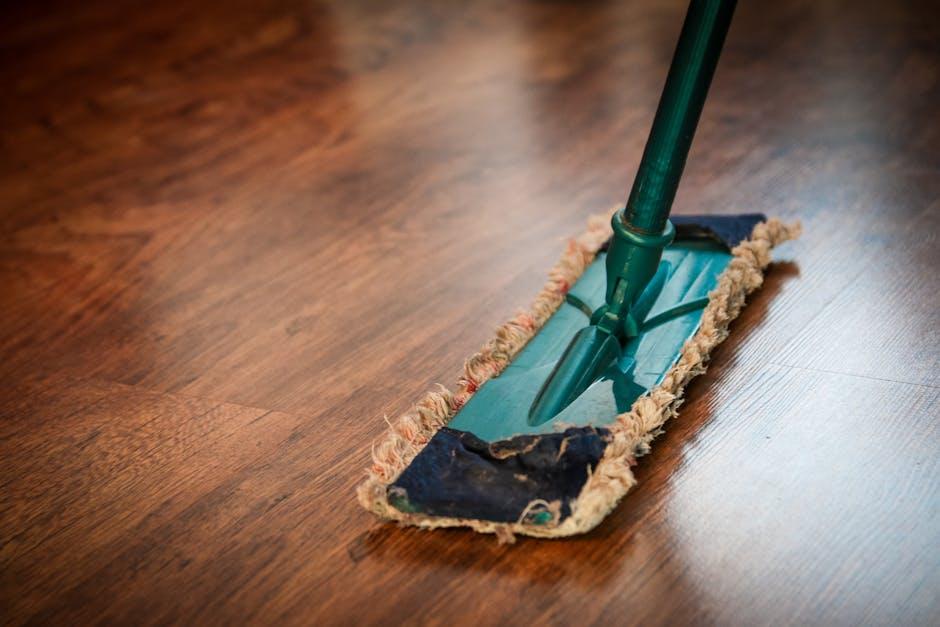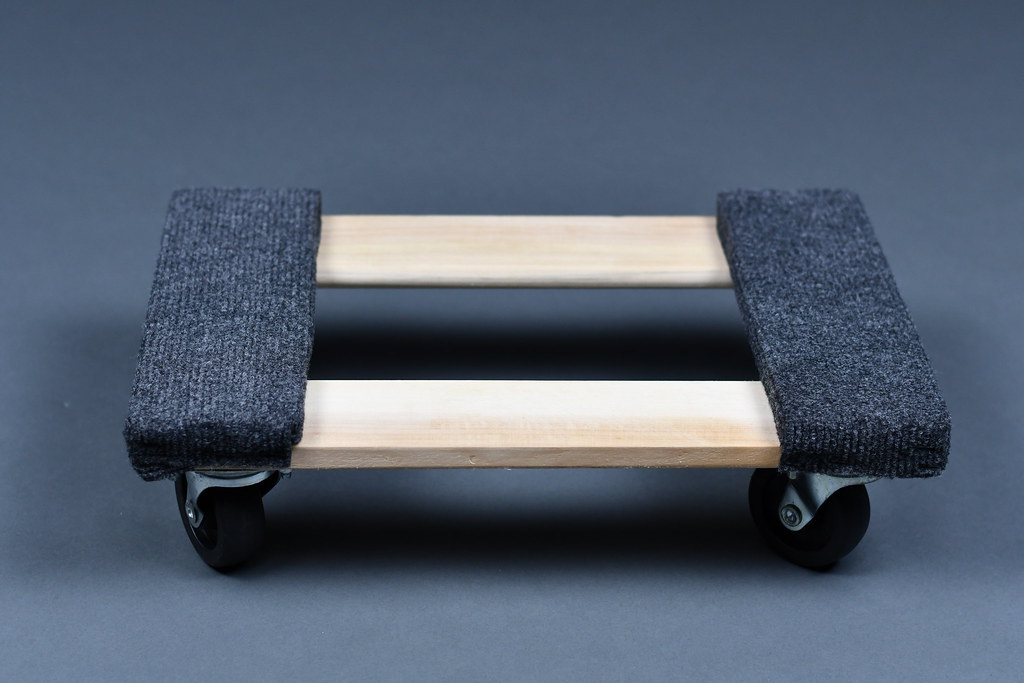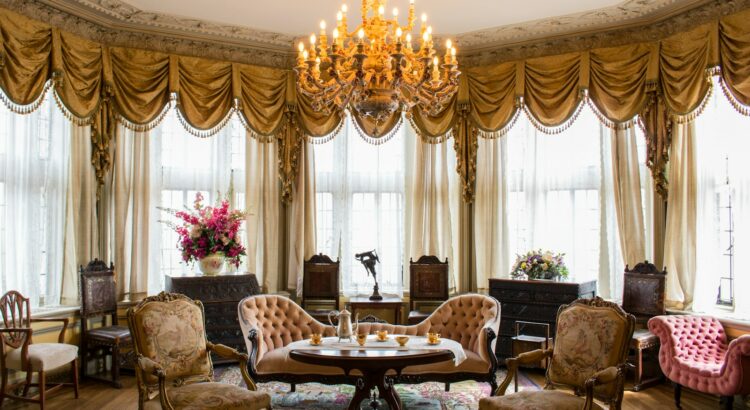Step back in time with us as we delve into the world of antique furniture preservation techniques. Whether you’re a seasoned collector or just have a penchant for old-world charm, learning how to properly care for and preserve these timeless pieces is a must. From delicate wood to ornate upholstery, we’ll explore the tips and tricks to ensure that your beloved antiques stand the test of time. So, grab your polishing cloth and get ready to uncover the secrets of preserving and enhancing the beauty of antique furniture.
Table of Contents
- Understanding Wood Behavior and Environmental Effects
- Choosing the Right Cleaning Products for Your Antiques
- Regular Dusting: A Gentle Approach to Antique Preservation
- The Art of Waxing: Protecting Wood Surfaces Naturally
- Mastering Humidity: Balancing the Climate for Furniture Longevity
- Shielding Precious Pieces from Sunlight Damage
- Investing in Professional Restoration Services
- Customizing Storage Solutions for Delicate Antiques
- Implementing Controlled Handling and Moving Techniques
- Employing Periodic Inspection Routines for Early Detection
- Questions & Answers for Antique Furniture Preservation Techniques
- In Summary
Understanding Wood Behavior and Environmental Effects
Antique furniture preservation techniques are essential to maintain the integrity and beauty of your cherished pieces. Understanding how wood behaves in different environmental conditions is key to effective furniture preservation. When it comes to antique furniture care, it’s important to consider factors such as humidity, temperature, and light exposure.
Wood is a living material that reacts to its environment. Changes in humidity can cause the wood to expand or contract, leading to potential warping or cracking. It is crucial to maintain a consistent level of humidity in the room where the antique furniture is located. Using a dehumidifier or humidifier can help regulate the environment and prevent damage to the wood.
Exposure to direct sunlight and harsh lighting can cause the wood to fade and lose its original color and luster. When displaying antique furniture, consider placing it away from windows and using blinds or curtains to block out excessive sunlight. Additionally, using UV-filtering glass or applying a protective finish to the wood can help preserve its natural beauty.
Another important aspect of antique furniture preservation is temperature control. Fluctuations in temperature can cause the wood to expand and contract, leading to stress on the joints and overall structure of the piece. Keeping the room at a stable, moderate temperature can help prevent damage and ensure the longevity of the furniture.
Choosing the Right Cleaning Products for Your Antiques

When it comes to antique furniture care and preservation, choosing the right cleaning products is essential to maintaining the beauty and integrity of your pieces.
Here are some tips for selecting the best products for your antiques:
Identify the Material: Before choosing a cleaning product, you need to identify the material of your antique furniture. Different materials require different cleaning agents. For example, wood furniture may require a specific wood polish, while metal furniture may need a specialized metal cleaner.
Avoid Harsh Chemicals: When selecting cleaning products for your antiques, it’s important to avoid harsh chemicals that can damage the finish or patina of the furniture. Look for gentle, non-abrasive cleaners that are specifically formulated for antique furniture.
Test a Small Area: Before using any cleaning product on your antique furniture, it’s important to test it on a small, inconspicuous area to ensure that it doesn’t cause any damage. This is especially important for delicate or valuable pieces.
Consult a Professional: If you’re unsure about which cleaning products to use, it’s always a good idea to consult a professional antique furniture restoration expert. They can provide valuable recommendations and guidance based on the specific needs of your furniture.
Choosing the right cleaning products for your antiques is crucial for maintaining their beauty and value. By following these tips and taking a cautious approach, you can ensure that your antique furniture remains in great condition for years to come.
Regular Dusting: A Gentle Approach to Antique Preservation
When it comes to antique furniture care, regular dusting is an essential part of furniture preservation. Dust can build up over time and cause damage to delicate finishes and intricate carvings. To protect your beloved antiques, it’s important to take a gentle approach to dusting.
One of the best tools for dusting antique furniture is a soft, microfiber cloth. This type of cloth is gentle on the wood and can effectively pick up dust without scratching the surface. Avoid using feather dusters or rough cleaning cloths, as they can potentially cause damage to the furniture.
To start dusting, gently wipe the surface of the furniture with the microfiber cloth, making sure to reach all the nooks and crannies. Be sure to dust underneath and behind the furniture as well, as dust can collect in these areas over time. For delicate or intricate areas, such as carved details or inlays, use a soft-bristled brush to remove dust gently.
In addition to regular dusting, it’s important to keep your antique furniture away from direct sunlight and areas with fluctuating humidity levels. Direct sunlight can cause wood to fade and warp, while humidity can lead to mold and mildew growth. By taking a gentle approach to antique preservation through regular dusting and careful placement, you can ensure that your treasured pieces will last for generations to come.
| Pros | Cons |
|---|---|
| Gentle and effective | Requires regular maintenance |
| Preserves delicate finishes and carvings | May need to seek professional restoration for heavily damaged pieces |
| Can be done with simple tools | Requires attention to detail and patience |
The Art of Waxing: Protecting Wood Surfaces Naturally
Wood surfaces on antique furniture require special care to maintain their beauty and longevity. One of the most effective ways to protect these surfaces is through the art of waxing. Waxing not only provides a natural protective layer for the wood, but it also enhances its natural beauty.
Choosing the Right Wax
When it comes to antique furniture care, choosing the right wax is crucial. Beeswax is a popular choice for its natural and gentle properties. It provides a soft, matte finish and helps nourish the wood. Carnauba wax is another great option, known for its durability and ability to create a lasting protective layer. Both waxes are excellent choices for furniture preservation, but it’s important to consider the specific needs and finish of the wood before making a decision.
The Waxing Process
Before beginning the waxing process, it’s essential to thoroughly clean the wood surface. Use a soft, lint-free cloth to apply the wax in small, circular motions, working in small sections at a time. Allow the wax to dry for a few minutes, then buff it gently with a clean cloth to achieve a smooth and lustrous finish. Repeat this process every few months to maintain the protective layer and keep the wood looking its best.
Pros and Cons of Waxing
Waxing is a wonderful way to naturally protect and enhance wood surfaces. It offers a gentle, non-toxic solution for antique furniture care, allowing the wood to breathe while providing a protective barrier. However, waxing may require more frequent applications compared to other protective finishes, and it may not be as effective against heat and moisture damage. Nonetheless, for those seeking a traditional, natural approach to furniture preservation, waxing is an excellent choice.
The art of waxing is a time-honored technique for protecting wood surfaces naturally. With the right wax and proper application, antique furniture can be beautifully preserved for generations to come. Whether using beeswax or carnauba wax, the waxing process is a labor of love that pays off in the end with stunning results. So, roll up your sleeves, grab your favorite wax, and give your antique furniture the care and protection it deserves.
Mastering Humidity: Balancing the Climate for Furniture Longevity

Antique furniture care and preservation are essential for maintaining the beauty and value of your beloved pieces. One crucial aspect of this care is mastering humidity levels to balance the climate for furniture longevity. Fluctuations in humidity can cause wood to expand and contract, leading to cracks, warping, and other damage. To protect your antique furniture, follow these proven techniques for controlling humidity in your home.
Use a Hygrometer
Invest in a hygrometer to monitor the humidity levels in your home. This device will give you real-time readings, allowing you to take action when the humidity is too high or too low. Aim for a relative humidity of 45-55% for optimal antique furniture preservation.
Regulate Airflow
Proper airflow is crucial for maintaining consistent humidity levels. Avoid placing antique furniture near vents, radiators, or drafty windows, as these can create fluctuations in humidity. Instead, position your pieces in areas with stable airflow to minimize the risk of damage.
Use a Dehumidifier or Humidifier
Depending on your climate, you may need to use a dehumidifier or humidifier to maintain the ideal humidity levels for antique furniture preservation. In humid environments, a dehumidifier can help reduce moisture levels, while in dry climates, a humidifier can add necessary moisture to the air.
Monitor Seasonal Changes
Be mindful of seasonal changes in humidity, as these can significantly impact your antique furniture. During the winter, when indoor air tends to be drier, use a humidifier to prevent wood from drying out and cracking. In the summer, when humidity levels rise, a dehumidifier can protect your furniture from excess moisture.
By mastering humidity and balancing the climate in your home, you can ensure the longevity of your antique furniture for generations to come. These preservation techniques are essential for protecting the beauty and integrity of your cherished pieces. Incorporate these tips into your antique furniture care routine and enjoy your stunning collection for years to come.
Shielding Precious Pieces from Sunlight Damage
Antique furniture care is an essential part of furniture preservation, especially when it comes to shielding your precious pieces from sunlight damage. Exposure to sunlight can cause irreversible damage to your antique furniture, such as fading, warping, and cracking. To ensure the longevity of your beloved pieces, here are some techniques to protect them from sunlight damage.
1. Positioning
One of the simplest ways to shield your antique furniture from sunlight damage is to strategically position it away from direct sunlight. Consider moving your pieces to a part of the room that receives less natural light, or use window treatments like curtains or blinds to block out harsh rays.
2. UV-Protective Film
Applying a UV-protective film to windows can significantly reduce the amount of harmful UV rays that penetrate into your space. This film helps to filter out the damaging effects of sunlight while still allowing natural light to enter the room, making it an ideal solution for preserving your antique furniture.
3. Furniture Covers
Investing in high-quality furniture covers can offer an extra layer of protection for your antique furniture. Look for covers made from UV-resistant materials and ensure that they fit your pieces properly to provide maximum coverage and protection.
4. Routine Maintenance
Regularly dusting and cleaning your antique furniture can also help to prevent sunlight damage. Dust and debris can attract and absorb UV rays, accelerating the deterioration process. By keeping your pieces clean, you can minimize the effects of sunlight exposure and maintain their beauty for years to come.
By implementing these antique furniture preservation techniques, you can safeguard your precious pieces from sunlight damage and ensure that they remain in pristine condition for generations to come. Remember that proper care and maintenance are essential for protecting your investment and preserving the beauty of your antique furniture.
Investing in Professional Restoration Services
Preserving antique furniture takes a delicate touch and specialized knowledge. Investing in professional restoration services can help ensure your treasured pieces are cared for properly.
Consult with a Professional: When it comes to antique furniture care, it’s essential to consult with a professional restoration specialist. They can assess the condition of your furniture and recommend the best preservation techniques.
Gentle Cleaning: Antique furniture preservation requires gentle cleaning methods to avoid damaging the delicate surfaces. A professional restoration service will know the right products and techniques to use for each specific piece.
Repair and Restoration: Over time, antique furniture may develop cracks, scratches, or other damage. Professional restoration services can expertly repair and restore these pieces, preserving their original beauty and functionality.
Climate Control: Proper storage and climate control are crucial for furniture preservation. A professional restoration service can provide advice on maintaining optimal conditions for your antique pieces.
With the help of professional restoration services, you can ensure that your treasured antique furniture remains in pristine condition for generations to come. Whether it’s gentle cleaning, expert repairs, or climate control guidance, is a valuable step in antique furniture preservation.
Customizing Storage Solutions for Delicate Antiques

Preserving delicate antique furniture requires careful consideration of storage solutions to protect these valuable pieces from damage. Customizing storage options is essential to ensure the longevity of antique furniture and maintain their pristine condition for years to come.
Here are some specialized techniques for creating customized storage solutions for delicate antiques:
1. Climate-controlled storage: Ensure the storage area is climate-controlled to maintain stable temperature and humidity levels, which are crucial for preventing warping, cracking, and deterioration of antique furniture due to moisture and temperature fluctuations.
2. Customized padding and wrapping: Use specialized padding and wrapping materials such as acid-free tissue paper, foam padding, and breathable fabric covers to protect delicate surfaces and intricate carvings from scratches and abrasions during storage.
3. Adjustable shelving and compartments: Customize storage units with adjustable shelving and compartments to accommodate different sizes and shapes of antique furniture pieces, ensuring a secure fit and preventing shifting or movement within the storage space.
4. Pest control measures: Implement pest control measures such as using natural repellents, sealing storage containers, and regular inspections to protect antique furniture from damage caused by pests such as moths, beetles, and rodents.
By customizing storage solutions with these techniques, antique furniture care and preservation are elevated to a specialized level, ensuring the protection of these valuable pieces for future generations to appreciate.
Implementing Controlled Handling and Moving Techniques

Preserving antique furniture requires careful handling and moving techniques to avoid damage and deterioration. Implementing controlled handling and moving techniques is crucial to ensuring the longevity of your precious pieces.
Here are some tips for safely handling and moving antique furniture:
Prepare the Area:
Before moving any furniture, clear the pathway and remove any obstacles to ensure a smooth and safe transfer. This will prevent accidents and minimize the risk of damaging the furniture.
Use Proper Lifting Techniques:
When lifting heavy antique furniture, always bend your knees and keep your back straight to avoid back injuries. It’s best to have at least two people lift and carry the furniture to distribute the weight evenly and reduce strain.
Protect the Furniture:
Use furniture pads, blankets, or moving straps to protect the surface of the antique pieces from scratches and dents during the moving process. Secure any loose components, such as drawers or doors, to prevent them from getting damaged.
Invest in Quality Moving Equipment:
Consider investing in high-quality moving equipment, such as furniture dollies or sliders, to make the process easier and safer. This will reduce the risk of accidents and ensure that the furniture is handled with care.
By following these controlled handling and moving techniques, you can effectively preserve the quality and beauty of your antique furniture for years to come. Taking the time to handle and move your furniture with care is essential for its long-term preservation and will help maintain its value and aesthetic appeal.
Employing Periodic Inspection Routines for Early Detection

When it comes to antique furniture care and furniture preservation, employing periodic inspection routines is crucial for early detection of any issues that may arise. By regularly inspecting your antique furniture, you can catch any signs of damage or wear and tear before they become significant problems. Here are some key steps to follow when implementing periodic inspection routines for your antique furniture:
Step 1: Dusting and Cleaning
Regularly dusting and cleaning your antique furniture is an essential part of the inspection process. Use a soft cloth or brush to gently remove dust and debris from the surface of the furniture. Avoid using harsh chemicals or abrasive materials, as these can cause damage to the wood and finish.
Step 2: Inspect for Cracks and Warping
Check the furniture for any signs of cracks, warping, or splitting. Pay close attention to areas where the wood joins together, as these are common places for damage to occur. Look for any changes in the shape or structure of the furniture, as this could indicate underlying issues.
Step 3: Check for Insect Damage
Inspect the furniture for any signs of insect damage, such as small holes or tunnels in the wood. Look for evidence of wood-boring insects, as these can cause significant damage if left unchecked. If you suspect insect damage, it’s essential to take immediate action to prevent further harm to the furniture.
Step 4: Assess the Finish
Finally, examine the finish of the furniture to check for any signs of wear or deterioration. Look for areas where the finish may be wearing away, cracking, or peeling. If necessary, consider applying a new coat of finish to protect the wood and preserve the furniture for years to come.
By implementing these periodic inspection routines, you can ensure the early detection of any potential issues with your antique furniture, allowing you to take the necessary steps to preserve its beauty and value. Remember, regular maintenance and care are key to keeping your antique furniture in top condition for generations to come.
Questions & Answers for Antique Furniture Preservation Techniques
How can I prevent woodworm in my antique furniture?
To prevent woodworm in your antique furniture, regularly clean and polish the wood to discourage insects from nesting in the surface. Additionally, store the furniture in a cool, dry place to minimize the risk of woodworm infestation.
What is the best way to polish antique furniture?
The best way to polish antique furniture is to use a soft, lint-free cloth and a high-quality furniture polish specifically formulated for antique wood. Gently apply the polish in small, circular motions to avoid damaging the delicate surface.
How can I remove water stains from antique furniture?
To remove water stains from antique furniture, gently rub the affected area with a mixture of equal parts white vinegar and olive oil. Allow the solution to sit for a few minutes before wiping it off with a soft cloth. Repeat as needed until the water stain is gone.
What is the most effective way to protect antique furniture from sunlight damage?
The most effective way to protect antique furniture from sunlight damage is to position the pieces away from direct sunlight or use UV-protective window coverings. Additionally, apply a coat of UV-resistant wood polish to create an extra barrier against harmful rays.
How do I repair scratches and dents in antique furniture?
To repair scratches and dents in antique furniture, use a wood filler to fill in the damaged areas. After the filler has dried, carefully sand the surface to blend it with the surrounding wood. Finish by applying a matching wood stain and seal with a topcoat.
What can I do to preserve the original finish on antique furniture?
To preserve the original finish on antique furniture, avoid using harsh chemical cleaners and opt for gentle, natural cleaning solutions. Additionally, regularly wax and polish the surface to maintain the protective layer and prevent the finish from deteriorating.
How can I safely clean delicate upholstery on antique furniture?
To safely clean delicate upholstery on antique furniture, lightly brush off any dust or debris and then spot-treat any stains with a mild upholstery cleaner. Always test the cleaner in an inconspicuous area before applying it to the entire piece.
How can I prevent wood warping in my antique furniture?
To prevent wood warping in your antique furniture, regulate the humidity level in the storage area to minimize fluctuations in moisture. Additionally, avoid placing the furniture near sources of heat or moisture, which can cause the wood to expand and contract.
How do I remove musty odors from antique furniture?
To remove musty odors from antique furniture, place a small dish of baking soda inside the piece and leave it for a few days to absorb the odor. You can also lightly spritz the fabric or interior with a mixture of water and vinegar to help neutralize the smell.
What is the best way to protect antique furniture from dust and dirt?
The best way to protect antique furniture from dust and dirt is to regularly dust the surfaces with a soft cloth and store the pieces in a clean, enclosed environment when not in use. Consider using furniture covers or dust sheets for added protection.
In Summary
Whether you’re a seasoned antique collector or just starting to dabble in the world of vintage furniture, preserving these timeless pieces is essential to maintaining their beauty and value. By incorporating the techniques we’ve discussed in this article, you can ensure that your antique furniture will continue to stand the test of time.
So go ahead and show some love to your antique furniture. Trust me, they’ll thank you for it!
And remember, the beauty of antique furniture lies not only in its design and craftsmanship, but also in the stories it carries with it. Let’s make sure those stories get to be told for generations to come. Happy preserving!
